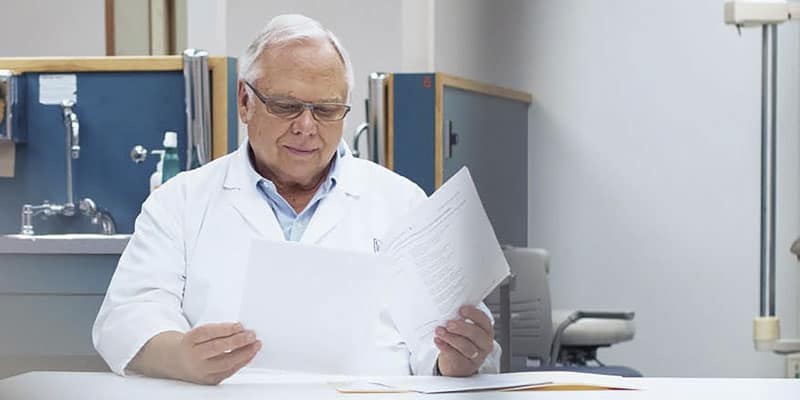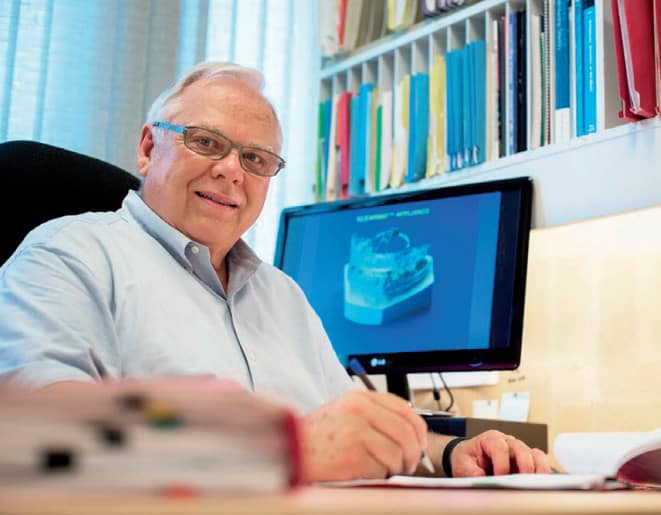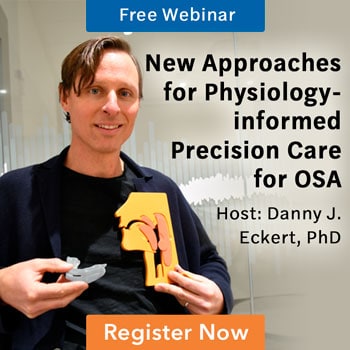This interview with Influencer Dr. Alan Lowe gives insight into his practical, yet scientifically sound teaching.
 DSP continues to honor the founders of our profession in an ongoing series of interviews with those who were there at the beginning. This issue, we sat down with Dr. Alan Lowe, retired professor of orthodontics at University of British Columbia. Dr. Lowe was part of the group that started the Sleep Disorders Dental Society and has influenced countless dentists with his practical, yet scientifically sound, teaching.
DSP continues to honor the founders of our profession in an ongoing series of interviews with those who were there at the beginning. This issue, we sat down with Dr. Alan Lowe, retired professor of orthodontics at University of British Columbia. Dr. Lowe was part of the group that started the Sleep Disorders Dental Society and has influenced countless dentists with his practical, yet scientifically sound, teaching.
You’ve been named as the developer of one of the first commercially available devices specific to treatment of obstructive sleep apnea, the Klearway. Can you tell us how you took the ‘snore appliance’ concept and developed a system to treat what was then a new disease?
The role of airway and tongue posture are important determinants in the development of the dentition which has been studied by orthodontists for decades and several current clinical therapies take these factors into account. The Canadian Federal government sponsored multicenter clinical trials of patented Canadian inventions and Klearway was invented and patented specifically with the encouragement of the Industrial Liason Office at the University of British Columbia which created a significant amount of interest in both the dental and medical professions. Klearway was licensed by the University to Space Maintainers Canada and Great Lakes Orthodontics both clear national industry leaders in the field. These two companies assumed exemplary roles in manufacturing appliances to a high standard and actively supported educational programs for both dentists and physicians. The University of British Columbia was uniquely equipped to contribute to this field with an established medical sleep clinic that worked in close association with our dental sleep group especially as we tested and developed a number of oral appliances. One of our first priorities was to establish a clinical protocol for oral appliance use in sleep disordered breathing. Over time and years of clinical testing, guidelines for appliance selection, titration protocols, quantification of side effects, post treatment studies and potential insurance options were developed to guide dentists and physicians in this newly developing field.
Dr. John Remmers credits you with recruiting him to support the dentist’s role. Collaboration with physicians has been a rocky road for our field – what are your thoughts about today’s state of affairs?
Dr. John Remmers and I shared common research interests in the late 1970s as he was especially interested in 3D reconstructions of tongue posture we had developed at UBC based on CT scans. Shortly thereafter, he served as external PhD examiner for one of my students and we have collaborated on numerous projects and panel discussions ever since. He has been a strong advocate for the use of oral appliances in the treatment of sleep disordered breathing. Together we have encouraged dentists and sleep physicians to treat such patients and have fostered this educational role across North America and around the world. Unfortunately both professions are primarily led by clinicians with an inherent suspicion of the others motives which has slowed down progress in this area. Initially, a lack of clinical trial data to support the efficacy of oral appliances slowed the field down but over time several comparative studies were eventually published and both therapies were found to be effective therapeutic options. Insurance companies were initially hesitant to fund oral appliances and the pros and cons of oral appliances vs. nCPAP took several decades to sort out.

It’s one thing to come up with a great idea, another entirely to promote this to an entire profession. What do you think of the ripple effects of your work, seen today in the number of dentists engaged in treating sleep related breathing disorders?
Over the next three decades revenue from royalties helped to sponsor research trainees from within and outside Canada many of whom continue to contribute to developments in this field today. Training dentists in the basics of sleep medicine and the required clinical and titration protocols took years to establish. The establishment of the American Association of Dental Sleep Medicine set a standard for training and certification of some 1,500 dentists which has been further defined over time. Problems with nCPAP adherence drove the oral appliance market in part and the general public actively sought out therapeutic options for both snoring and obstructive sleep apnea.
One of your signature lines is: “Teeth move, get over it.” Dentists are trained to make bites work – how do you reconcile your work as a professor of orthodontics with acceptance of changes to bites using oral devices?
Early on as we tested various oral appliance for sleep disordered breathing, we were surprised to observe tooth movement in selected patients after prolonged oral appliance use. Initially this was a definite concern for many clinicians since so much time is spent creating straight and supposedly healthy dentitions. However we were also observing tooth movement after prolonged nCPAP wear so both therapies had an effect on tooth position although expressed in different ways. We quantified and published data from both therapies and trained dentists on how to recognize same and even reduce the progress of such movements in selected patients. With time, tooth movement related to sleep therapies began to be recognized as common side effects and inappropriate cessation of either therapy was replaced with careful monitoring and appliance adjustments. Tooth movement in adults often in periodontally-compromised dentitions can occur rapidly due to reduced alveolar bone support but does not cause death of our patients and must be accepted as a side effect. Training both professions to acknowledge and recognize this reality has been an ongoing challenge especially when both professions can on occasion be oblivious to the long term effects of untreated obstructive sleep apnea.
What role do you see orthodontists playing in young children who are at risk of breathing disorders?
Orthodontists are trained to recognize adenoid faces in the waiting room and plan effective therapies to establish a functional occlusion. However, a number of tongue disorders contribute to misaligned teeth and this in combination with compromised airways can be difficult to diagnose and effectively treat on the long term. Functional appliances which advance the mandible in growing children may have an important role in the control of disordered breathing but objective data of this commonly assumed concept has not been published to date other than in very small case studies. This represents an important field for growth in dental sleep medicine and is beginning to get the attention it warrants.
Many dentists ask when dental schools will include airway growth/function/management into their curriculum, and teach about sleep disturbances to undergraduate students. Obviously you can’t speak for all dental schools, but from your perspective as a professor, do you see this coming soon? Do you think a dentist-alumnus could have an influence on their local dental school?
As an academic orthodontist with some 53 years of experience in university and practice group settings, I have found this to be a frustrating and slow moving aspiration. Dental curriculum are full of new technologies and challenges as the science of dentistry advances very quickly and sleep disordered breathing holds little weight in comparison to the demands of changing dental therapeutics. Traditional dentistry is hesitant to include oral appliance therapy in part because so few universities have adequately trained individuals to create such courses provide same. The need for more full time dental academics in the field is paramount to the inclusion of the field in a dental school curriculum.
Len Liptak and Dr. Mike T. Murphy write about what happens when an influencer makes SHIFT happen in the dental sleep world. https://dentalsleeppractice.com/influencers-making-shift-happen/





